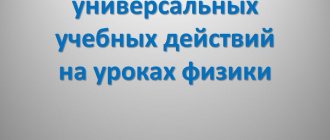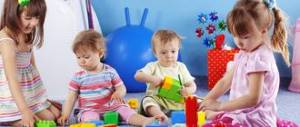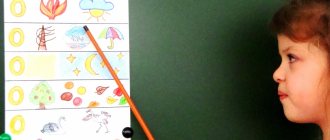Types of semantic reading.
The following types of reading are distinguished:
- viewing;
- introductory;
- studying;
- reflective.
Scanning reading is a type of semantic reading in which a search for specific information or fact occurs.
Introductory reading is a type by which the main meaning and key information are determined in the text.
Study reading is a type of semantic reading in which, depending on the purpose, a search for complete and accurate information and its further interpretation occurs. From everything written, the main thing is highlighted, and the secondary is omitted.
Reflective reading is the most thoughtful reading. During this process, the reader anticipates future events by reading the title or as he reads.
Report: “Meaningful reading in music lessons”
Meaningful reading in music lessons.
Reading is a multifunctional process. On the one hand, competent reading skills are necessary when working with large amounts of information. This ensures success for adults in work and for children in school. On the other hand, reading plays an important role in the socialization of students.
Currently, our school pays great attention to meaningful reading.
The goal of semantic reading is to understand the content of the text as accurately and completely as possible, to grasp all the details and practically comprehend the extracted information. This is careful reading and insight into the meaning through text analysis. When a person really reads thoughtfully, his imagination definitely works; he can actively interact with his internal images, which is very important in music lessons. A person himself establishes the relationship between himself, information and the world around him. A music lesson, structured from the perspective of developing meaningful reading, helps students acquire the skills to independently work with information. New knowledge turns out to be not something detached that needs to be learned to mark the mark, but something into which one’s own strength is invested. This means that interest in the subject increases.
The music program at the level of basic general education provides an opportunity to develop the following skills, defined by the interdisciplinary program “Strategies for semantic reading. Work with text":
-find the necessary information in the text, including in the text of the textbook;
-analyze the content of the text;
-interpret the content of the text;
- see the information behind the lines of what you read.
And due to the peculiarities of a music lesson, I can develop the ability to compare text and music, anticipate the features of a musical work after reading a descriptive text.
I will give specific examples.
In the 4th grade music course there is a topic “Nature and music. Signs of spring."
We experience the beauty of nature, its rhythms can change our mood, we can be sad and happy, admire and calm down, wanting to express the highest beauty of the natural world, we say: “Music of nature.” Nature is always sincere and pure with us, we hear and contemplate it. And today, guys, let's hear nature in music!
Before turning to the piece of music, I invite students to work with the text by Alexei Nikolaevich Tolstoy, which contains a description of spring, but I remove its title. I suggest you work with this text too.
Author: Tolstoy Alexey Nikolaevich
It was now impossible to look at the sun; it poured down from above in shaggy, dazzling streams. Clouds floated across the blue, blue sky like heaps of snow. Spring breezes smelled of fresh grass and birds' nests. Every day there were more birds in the garden. Blackbirds ran between the trunks - they were agile on foot. In the linden trees an oriole, a large bird, green, with yellow, gold-like down on its wings, fluttered about, whistling in a honeyed voice. As the sun rose, on all the roofs and birdhouses the starlings woke up, began to sing in different voices, wheezed, whistled, now with a nightingale, now with a lark, now with some African birds, which they had heard enough of over the winter overseas - they mocked, out of tune terribly. A woodpecker flew like a gray handkerchief through the transparent birches, landing on the trunk, knocking, turning around, raising its red crest on end. Larks soared high into the sky, heralding the arrival of spring.
Methods and techniques for teaching semantic reading.
The following methods and techniques are used to teach semantic reading:
Development of the ability to analyze a task.
Search for keywords in a task and the ability to read instructions.
Answers to questions posed (both written and oral).
Determining the sequence of events in the text read.
Formulating simple conclusions after reading the text.
Converting read text into a table.
Comparison of illustrative material with textual information.
Explanation of various situations using the text read.
The ability, based on the text read, to prove one’s point of view and refute any statements.
Finding the necessary information in various information sources: dictionaries, reference books, encyclopedias, etc.
Stages of developing semantic reading skills.
Work on the formation of semantic reading skills must be carried out in a system, complicating the techniques and methods of reading and processing information from class to class. What are the main steps that should not be skipped?
Working with unfamiliar words (explaining unfamiliar words).
The teacher must determine whether children understand the meaning of individual words.
He needs to clarify this while reading so that the students develop the skill of independently identifying unfamiliar words whose meaning needs to be deciphered. You can underline such words and look for their interpretation in the dictionary after reading, or the meaning is explained by the teacher. A novice reader often does not clearly realize that there is a word in the text that he does not understand. Such a word slips through the context, leaving the illusion of clarity. Any teacher has encountered this phenomenon, asking children a question after reading a text: “Which words were incomprehensible?” As a rule, children do not use such words. Finding out the meanings of a number of words from the text read convinces that many of them were left beyond understanding. The current school practice of parsing words is not effective enough, since children sometimes do not understand words that are very simple at first glance. Therefore, without excluding vocabulary work before reading, it is important to create a mindset in children to independently highlight unknown words when reading and find out their meanings. In the method of teaching text comprehension, the emphasis is on making sure that every word that a child does not understand is like a red traffic light, preventing further movement.
Example
Vitaly Bianki “Hare, braided whale, bear and spring”
Read the concepts and interpretations of words and phrases. Color the pairs with the appropriate color.
At the first stages of working with text, it is necessary to interrupt reading to find out words that children do not understand. Gradually, students get used to underlining unclear words while reading. Then these words are discussed: can the word be understood from the context or should a dictionary be used.
Working with keywords.
Any written material certainly contains key words, without which the meaning of the work is lost. The teacher must help students find them and explain the need for use and the meaning they carry. It would be interesting to work with keywords in this form: A teacher or student reads a story, story or something else. Next, the teacher asks the children what main words they could highlight and writes them on the board, and the children write them in notebooks. After this, you are asked to reproduce the text you read using these keywords. You can write down such words as you read.
Understanding of the text seriously suffers from inattention to the key, most important words in the text. Sometimes the meaning of the entire text depends on one word, and without a “hook” for this word it is impossible to understand the text correctly.
Children need to pay attention to such words when reading any text.
Example
Skrebitsky "White Fur Coat"
Underline the words in the passage from the text that explain why the author named his text that way.
The morning was quiet; the night before there had been a lot of snow. The forest became white and shaggy.
In an instant, our little bunny disappeared in the snowy bushes.
That's when his white fur coat came in handy!
Working with words and images.
It is impossible to enjoy reading a literary text without a sensitive attitude to the words-images or artistic means found by the author of the work. Getting to know word-images, which hide the secrets of the beauty of the text, begins with the concept of comparison. Comparison makes it possible to make the image that appears in the reader more vivid, complete, and voluminous, but there is no need to discuss literary concepts with a novice reader, since this is not the main thing in understanding; the main attention should be paid to enriching the imagery with the help of the artistic means used by the author.
You need to pay attention not only to image words, but also to sounds, parts of words, forms or word order.
Working with polysemantic words.
Find well-known words in another, unusual use.
A fork or knife must be handled very carefully because it is sharp.
The mustard was so spicy that Vanya had tears in her eyes.
Alyosha caught a cold and therefore did not go for a walk with the guys.
When Anna Ivanovna went out into the alley, there was no trace of the hooligans.
Working with phraseological units.
1. Replace the highlighted words in the sentence with phraseological units.
Example
Julia argued with her friend for a long time about what to give Vera for her birthday. Finally, they agreed ( found a common language
).
Scientists are worried and warning ( sounding the alarm
): the earth is threatened by an environmental disaster.
2. Determine which phraseological unit is suitable for this text.
Example
The dacha was located in a picturesque grove, in a very convenient location: nearby ( two steps
) there was a river flowing, and it was very close to the station (
at your fingertips
).
3. Compose a dialogue using phraseological units:
Example
— Did you spend a long time solving a physics problem yesterday?
- Yes, for a very long time. Did you decide right away?
been racking my brain for a long time...
), but could not do anything without the help of his older sister.
Sentence story.
Read the sentence, think about it and write a short story based on it.
The principle of composing a story is the expansion of textual information. Example
And then I felt so frustrated and so angry that I threw this diary behind the bookcase that stood in our classroom.
The parent meeting was approaching. Mom said that if everything is good with my grades, then on Saturday we will go to the park. And I got a D in singing. I really didn’t want Maria Ivanovna to put this deuce in her diary, because then goodbye to the park. And when Maria Ivanovna collected the diaries, I did not give her mine. During the big break, the boys and I ran to the sport. Gym look newer exercise equipment. When we returned, I saw that my diary was lying on the desk and the deuce in it stood like a cute little thing. It turns out that Natasha, my desk neighbor, saw my diary, decided that I had accidentally forgotten to give it for checking, and took the diary to the classroom. And then I felt so frustrated and so angry that I threw this diary behind the bookcase that stood in our classroom.
Application of the “dialogue with the author of the text” method.
Dialogue with the author of the text occurs as a result of active reading of textual information in order to understand the “mysteries” of the text, discern the author’s position, and understand one’s attitude towards this position. The dialogue often begins when one is introduced to the title of the work, and ends with an independent search for answers to questions that remain unanswered in the text. If we talk about the targeted use of this method for educational purposes, it can be divided into several stages:
- we look for what is not very clear in the text and formulate questions;
- we predict answers to questions that have arisen and predict the further content of the text;
- self-test (we check our assumptions by comparing them with the text).
Methodists consider the “dialogue with the author of the text” method to be the most significant at the stage before reading (working with the title) and during the reading of the text, since it activates the processes involved in understanding. After such a dialogue, it is much easier for the reader to move on to analyzing those thoughts and feelings that the author wanted to share with the reader when creating his work.
Predicting the content of the text based on the title sets the reader up to perceive text information.
In order for the dialogue to be meaningful and complete, the reader needs to do a variety of work as he reads: find direct and hidden author’s questions in the text, ask his own questions, think about assumptions about the further content of the text, check whether they coincide with the author’s intention, use his imagination.
Example
Story by A.P. Gaidar "Conscience".
The lesson begins with students reflecting on the meaning of the title of the work: when do we talk about conscience? Probably when someone committed a not very plausible act. Something in this act makes us wary, thinking about why this happened. Did the person act according to his conscience? Should he have done anything differently? Why are people called unscrupulous in some situations? These and similar questions arise when the reader tries to predict, anticipate the presentation of events in the text, i.e. thinks about what he has to learn when getting acquainted with the work.
Next comes the initial reading of the text. This is a very important moment in the lesson, because... It is during the first acquaintance with the text, in the process of gradual immersion into it, that a lot of questions arise that you want to find the answer to in the work itself. How can this really happen in a dialogue lesson?
The beginning of the work: “Nina Karnaukhova did not prepare a lesson... and decided not to go to school.”
After reading this episode, the question immediately arises: why? Why didn't you prepare a lesson? Why did you decide not to go to school? Naturally, a chain of assumptions follows: I didn’t prepare the lesson because I had a headache, I was lazy, I couldn’t complete the assignment, I sat down for my homework too late, etc.; I decided not to go to school because...
“But so that her acquaintances would not accidentally see her hanging around the city with books during the working day, Nina secretly walked into the grove.”
After reading the episode, a natural question arises: how does a person feel who does something on the sly? Apparently very uncomfortable. He is all tense, there is a desire to become invisible. When you do something on the sly, it becomes embarrassing. Probably, Nina, sneaking into the grove, felt unwell. At such a moment, you involuntarily feel sorry for the person. I don’t really want to be in his place.
Let the children compare themselves with the hero of the work for a while, making their own assumptions. This will help them further understand this situation more deeply and analyze it in more detail.
At this stage, younger schoolchildren emotionally assess the situation and relate it to their life experience. This happens as you read each episode. At this stage there is no text analysis in the full sense of the word. After all, this is the first reading, but it is carried out in a dialogue lesson through gradual “immersion” in the text, in the process of “conversation with the author of the text.”
Children should be able to independently find questions hidden in the text and stop reading when opportunities arise to predict further content.
The teacher’s task at the beginning of teaching a dialogue with the author of a text is to stop reading when there is a direct or hidden question in the text and organize probable predictions, and as reading progresses, check the children’s predictions. The main thing is to teach them to see essential information in the text and not ask superficial questions.
Development of the reader's imagination.
Many difficulties in understanding and memorizing text are associated with undeveloped imagination. The development of the reader's imagination involves working on both the reconstructive and creative imagination.
You should practice “turning on” your imagination with small texts containing 1-2 figurative elements that can be easily recreated. Gradually, the number of such elements can be increased, moving on to the reproduction of entire paintings. The task is to imagine what is being described and reproduce your ideas orally or in writing, in words or paints.
What methodological techniques can activate the reader's imagination?
Verbal and graphic drawing will be effective, especially on the material of those works that do not immediately generate visual images. This applies to lyrical poems, texts rich in complex psychological analysis or with an abundance of landscape sketches.
Working with illustrations by professional artists, examining and analyzing them also plays a huge role.
Drawing up a filmstrip, a cartoon script, constructing literary characters and interior elements from paper or plasticine will also help to “awaken” the imagination.
We should not forget about the importance of such techniques as staging or dramatization, both of individual episodes and of the entire work. During this work, children will have to re-read the text more than once, paying attention to the details of artistic space and time, portrait characteristics, and descriptions of the characters’ behavior.
If possible, the novice reader should pay attention to how the author, with the help of words, helps us not only “see” pictures of the artistic world, but also “hear” the sounds of nature, the human voice, “inhale” the aroma of a forest or a warm summer evening.
To develop creative imagination, you can use the following tasks: come up with your heroes, your adventures, and a different ending for the work.
By teaching how to work with text, you can form the initial forms of cognitive and personal reflection:
- if you look at how the text is printed, you can easily find books with poems;
- by the author's surname one can guess the theme and genre of the work;
- illustrations help distinguish between fairy tales and stories;
- the title helps to understand the theme and main meaning of the book;
- how many works are in the book, and which ones, can be found out by the table of contents or contents.
Reading awareness.
Reading awareness presupposes the development of the following skills:
- identify words and expressions in the text whose meaning is unclear, and recognize the need to clarify their meaning;
- use footnotes and a school dictionary;
- answer questions about the content using the words of the text;
- determine the emotional nature of the text;
- highlight supporting (the most important for understanding what is being read) words;
- rely on the author's remarks to characterize the characters;
- determine the motives of the characters’ behavior by choosing the correct answer from a number of proposed ones;
- be able to predict the content of the text to be read;
- be aware of the author’s and one’s own attitude towards the characters;
- formulate the topic of a short text;
- work with the title of the text: choose the most accurate title from all those proposed, title the text yourself, predict the content based on the title and compose statements based on the given title;
- identify semantic and emotional subtext;
- determine the idea of a work by choosing from a number of proverbs the one that most accurately expresses the main idea;
- find the main idea formulated in the text.
To test reading comprehension, offer different tasks to different students.
Example
Wonderful tree.
The guys organized a festival for birds and animals in the forest. On New Year's Eve they decorated the tree with berries. The children tied pieces of bread to the upper branches. Carrots were attached to the lower branches. A head of cabbage was stuck under the tree in the snow. In the morning, flocks of elegant birds arrived. They chirped joyfully and treated themselves to gifts. In the evening, two hares were busy under the tree near a head of cabbage. They feasted on delicious cabbage and sweet carrots.
Task 1. Identify and tick the item that is not mentioned in the story.
Task 2. Answer the question: For whom did the children decorate the Christmas tree?
Task 3. Make a picture plan for retelling the text;
Task 4. Underline the sentence that expresses the main idea of the text. To test reading comprehension, it is good to use deformed text.
Example
Hazel.
There are many nuts among the carved hazel foliage. Each nut has a hard kernel that is tasty and nutritious. Ripe [berries, fruits, nuts] are an incomparable delicacy, pick them and throw them in the back! Just remember: many inhabitants of nature [fight, feed, throw] hazel nuts. They are hidden in reserve by jays, nuthatches and [wolves, foxes, squirrels]. Badgers and wild boars graze on them. [In Summer, Winter, Autumn] nuts will save many of our furry and feathered friends from starvation. That is why hazel trees must be protected, because they replenish the hidden storehouses of the forest.
Article: “Using semantic reading strategies in physics lessons as an effective teaching method”
A person lives in an information society, where it is very important to be able to act independently in certain situations, make decisions, and adapt to rapidly changing living conditions. Therefore, the school is faced with the task of educating a person capable of:
- navigate changing life situations, be able to acquire the necessary knowledge yourself and apply it in practice to solve emerging issues;
- be able, using modern technologies, to see emerging problems and look for ways to solve them;
- be able to think critically, have a clear idea of where and how the acquired knowledge will be applied, think creatively, and reproduce new ideas;
- carry out competent work with information (collect facts, reflect on them, make important generalizations, draw reasoned conclusions;
- be sociable, be able to communicate together in various areas and situations, find a way out of conflict situations;
- work independently on developing your own intelligence, cultural level, and literacy.[2]
The ability to be able to read the information provided to us by the world around us is very valuable. To read means to be able to explain, to find meaning.
The main difference between semantic reading and any other is that with semantic reading, the reader interprets and gives meaning to the text. This type of reading refers to the meta-subject results of the main educational program.
The formation of semantic reading skills and the ability to work with text is closely related to personal, cognitive, regulatory and communicative learning skills. The purpose of semantic reading is to understand the content of the text as accurately as possible, grasp all the details and comprehend the information received. After all, in order for reading to be meaningful, students need to clearly understand the meaning of the text, create a system of images, i.e. carry out cognitive activities. When a student reads each line carefully, he gains insight through text analysis, which influences his own development. Thoughtful reading activates the work of the imagination and the creation of images.
An important task of all subjects in school is to teach students to read correctly. That's right, this means thoughtfully, extracting important information from what you read, relating it to existing knowledge, and being able to interpret and evaluate.
Thanks to the implementation of the strategy of meaningful reading in physics lessons, the quality of assimilation of the curriculum will increase.
In physics lessons, it is necessary to organize systematic work with the textbook both in class and at home. To develop skills in working with text, the following areas are included:
5th – 6th grades:
- highlighting the main material in the text;
- compiling examples similar to those given in the text;
- the ability to find an answer to a question in the text;
- the ability to correctly formulate a read text when retelling.
7th – 8th grades:
- the ability to plan what you read;
- reproduction of the text according to the proposed plan;
- ability to apply problem solving patterns;
- memorizing definitions, formulas, laws.
9 – 11 grades:
- ability to work with drawings and diagrams;
- confirmation of scientific facts;
- taking notes on a new topic.
Thus, the formation of skills in semantic reading and understanding of text should begin in the 5th grade.
As you move from class to class, it is necessary to complicate the techniques, ways of reading and processing information. For the full text of the article: “Using semantic reading strategies in physics lessons as an effective teaching method,” see the downloadable file
. The page contains a fragment.
| Author: Kopteva Nadezhda Nikolaevna → nadyshka6 10/28/2015 0 4606 638 | Comment |
Thank you for your mark. If you want your name to be known to the author, log in to the site as a user and click Thank you again. Your name will appear on this page.
Login | Registration
Have an opinion? Leave a comment




